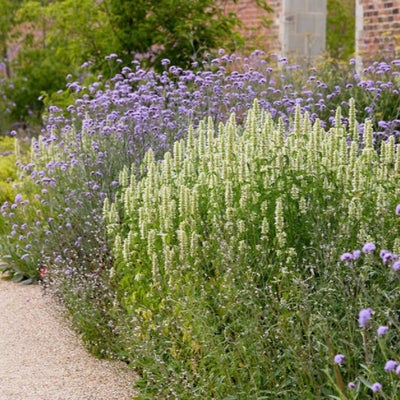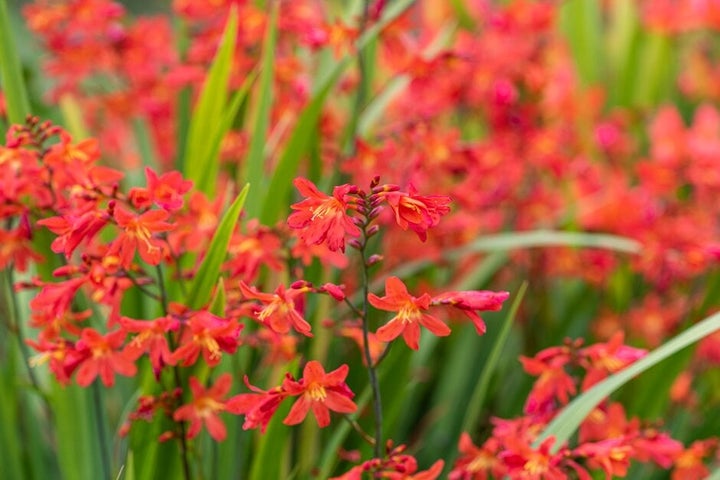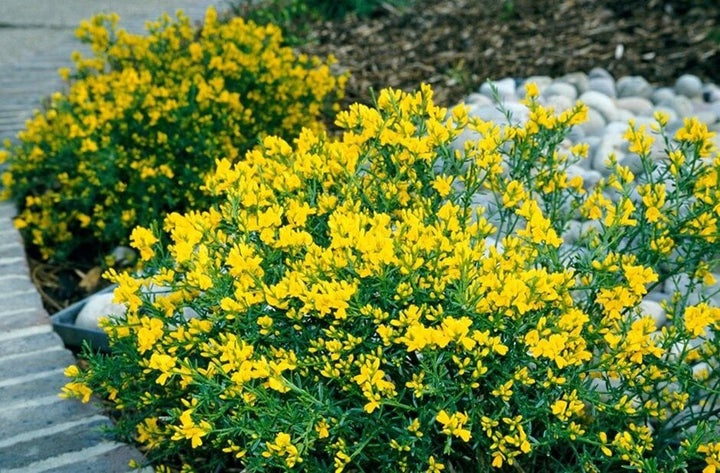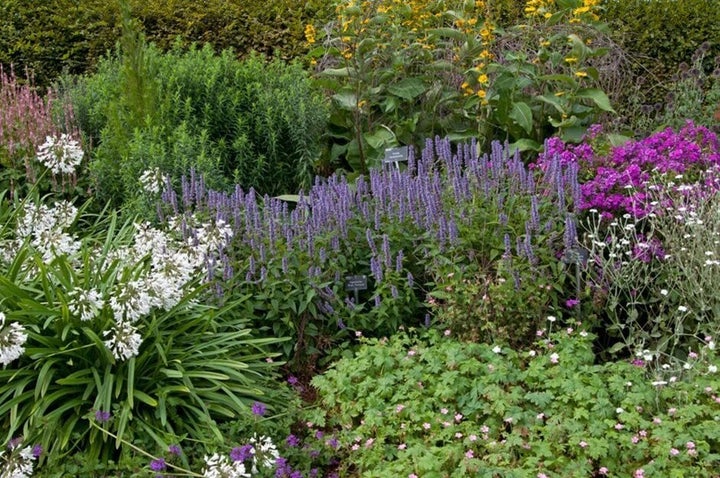
Quick facts
Sloping soil can be prone to slippage
The root systems of plants can be used to hold soil together and stabilise slopes
Sunny slopes often receive more intense sunlight than level ground, requiring sun-tolerant plants
The planting plan
James Lawrence, RHS Principal Horticultural Advisor, has designed this simple, attractive, and most importantly, sustainable border design for you to try at home with plants that are easy to grow, widely available and look good together.
This planting design for a challenging location provides a range of plants that, once established, will thrive in a sloping environment and help to bind and stabilise the soil while providing a variety of interest throughout the year.
A simple planting plan helps to create depth, interest and good coverage in a border.

Choosing plants to stabilise sunny slopes
The main function of this scheme is to help provide planting that can help to protect and stabilise the soil on a sunny slope. The spreading habit of plants such as the Ceanothus and Cistus helps to protect the soil surface and can reduce soil erosion, which can be more pronounced on slopes with exposed ground.
The Crocosmia and Agastache have shallow but spreading root systems, which help to bind the soil surface. The Thymus helps to cover ground, therefore reducing erosion and the drying effect of the wind on exposed soil. It will also help to prevent unwanted plants from self-seeding by reducing areas of bare soil.
‘Right plant, right place’ is essential here, as plants that are unable to cope with the sharp drainage and sunny will show signs of stress and will need higher inputs of resources such as water.
Additional organic mulching, preferably with homemade compost, can improve soil moisture retention and weed suppression. Mulches should be spread when the soil is already moist, to help trap some of that moisture before it dries out in summer.








1 -Crocosmia × crocosmiiflora ‘Carmin Brilliant’ is a clump-forming herbaceous with blade-like leaves. Arching flower stems bear an abundance of red that from mid to late summer develop into long-lasting, intense, dark orange tubular flowers, each with a yellow throat marked with reddish blotches.
2 - Genista ‘Porlock’ is a semi-evergreen shrub with small, soft leaves and clusters of fragrant, bright yellow, gorse-like flowers in spring.
3 - Ceanothus ‘Blue Mound’is a broad, bushy, medium-sized evergreen shrub with small, glossy leaves and compact heads of small bright blue flowers in late spring.
4 - Ceanothus ‘Dark Star’ is a spreading evergreen shrub with small, dark green leaves and clusters of deep blue-purple flowers on arching branches in late spring.
5 - Genista lydia is a compact, dwarf shrub with arching or trailing branches of small leaves and clusters of pea-like bright yellow flowers in early summer.
6 - Cistus × purpureus is a small, bushy evergreen shrub with narrow, dull green leaves. The summer flowers are purplish pink, with large deep red blotch at the base.
7 - Agastache ‘Blue Fortune’ is an upright herbaceous perennial forming a clump of leafy stems, with dense, upright spikes of small violet-blue flowers from summer to early autumn.
8 - Thymus pulegioides ‘Aureus’ is a compact, spreading, evergreen ground cover perennial with small, aromatic, bright golden-yellow leaves and clusters of small, pale mauve flowers in spring and summer.
About sunny slopes
Sloping gardens can be unstable and exposed to wind and the sun for long periods of the day. This can mean some plants are vulnerable to drying out and damage from root disturbance.
The challenge of growing plants on slopes
Sunny slopes can offer plants long hours of daylight, and more acute drainage as water runs down the slope. This can result in plants drying out. The soil in slopes can be vulnerable to erosion, resulting in a difficult root environment for the plants.
By choosing plants that are adapted to sunny sloping locations, you can keep your border looking good and growing well, and once the plants are established, this will reduce the need for additional inputs such as watering.
Why choose a sustainable planting combination?
Using the ethos of ‘right plant, right place’ to create a sustainable planting combination is great for the environment. It helps to avoid waste and the use of products and practices needed to try and help ailing plants, such as applying fertiliser. It also creates robust, long-lived planting that benefits soil health and garden . For more information about sustainable gardening, please see the RHS Sustainability Strategy.


